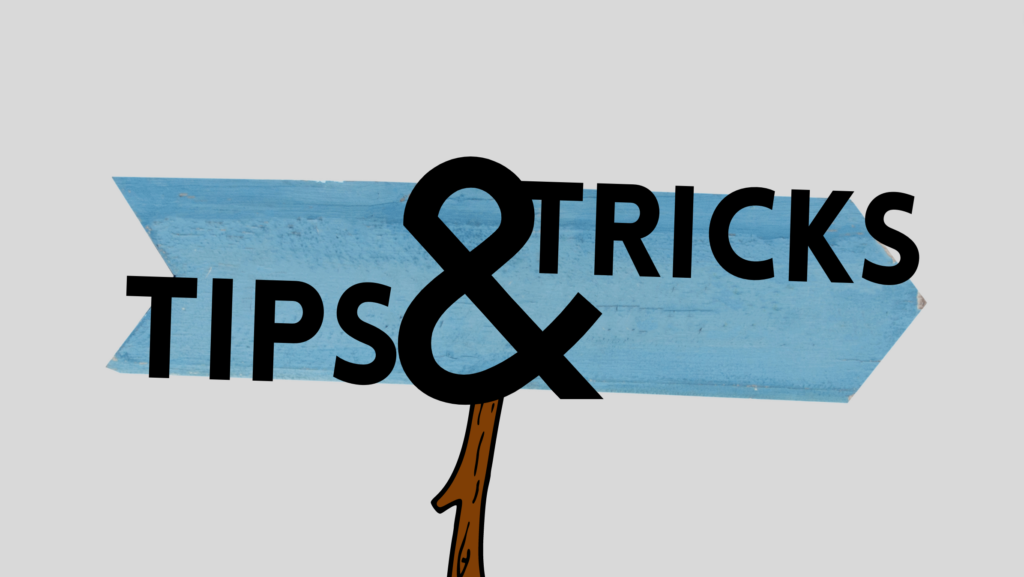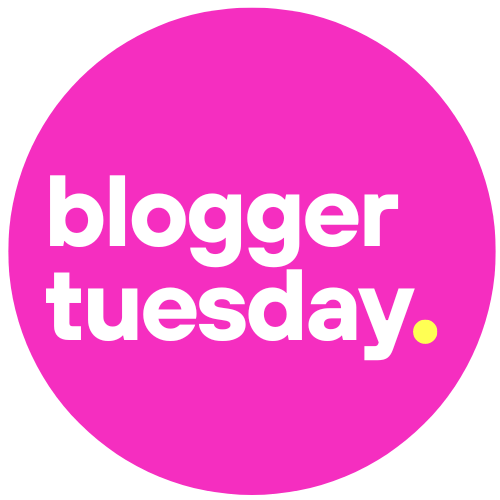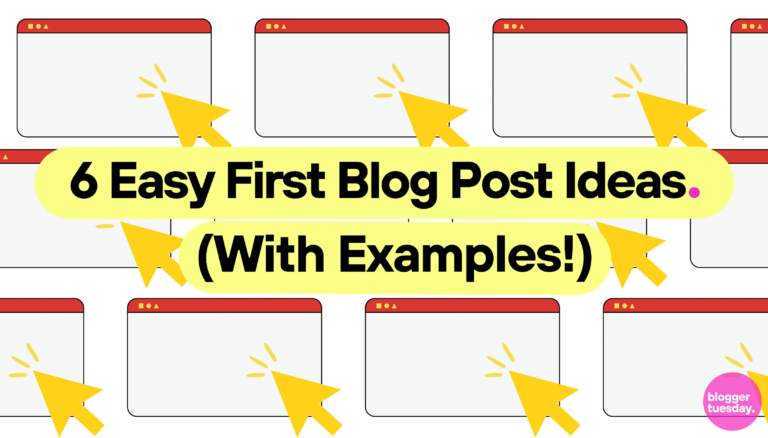Blogging is hugely popular. It is estimated that there are more than 600 million blogs in the world. Some people blog as a hobby, others monetise their sites and businesses and brands utilise content to raise brand awareness, generate leads and boost sales. If you’re thinking about ideas for your first blog, you’ve come to the right place.
Brainstorming is a useful process for bloggers preparing to create their first post. Concentrate on your chosen niche and conjure up ideas linked to related topics and subjects. Take inspiration from other bloggers, use content creation tools and keep a record of ingenious ideas or bolts of inspiration that come to you out of the blue. Carry a notepad around with you or use your phone to jot down ideas or record voice notes.
When choosing a niche for your blog, it’s important to strike the right balance. You want to connect with audiences and talk about and delve into topics that interest you, but you need to make sure that there is a demand for the content you produce. Try to avoid going too narrow with your focus or being too general in your approach. It’s wise to include evergreen blog posts, which cover subjects that never lose appeal or relevancy and to think about your target audience.
Research tools for brilliant blog post ideas
Even the most creative individuals can find it difficult to come up with groundbreaking or original ideas for blog posts. In some cases, you can sit down and start typing and the words come flying out, but often, it can be challenging to find the right idea, particularly for your first blog post. One way to make it easier to choose topics and create intriguing, interesting, enticing titles is to make use of research tools. There are some fantastic tools available to help with generating captivating content and exploring popular topics that are guaranteed to resonate with your readers and leave them wanting to hear more from you.
If you’re looking for first blog post ideas, here’s a list of our favourite tools:
1. Google Trends
Google Trends is a tool, which analyses popular search terms and queries to help bloggers and content creators identify trending topics and content themes that attract attention. Results are presented in lists or charts, which show you which terms and queries are most popular in a chosen region or location. Using Google Trends can help you select topics and subjects and zone in on niches within fields that have universal or widespread appeal. Currently, the top trending searches include Taylor Swift, Kim Kardashian, the Champions League, I’m A Celebrity Get Me Out Of Here contestants and the 2022 World Cup.
2. Exploding Topics
As you can probably guess from the name, Exploding Topics is a resource devoted to the topics that everyone is talking about. Providing up-to-date information about the hottest trends, this tool shines a light on emerging trends and areas of interest before they dominate the headlines.
3. Buzzsumo
BuzzSumo is a content platform, which helps bloggers and marketers to generate ideas based on market trends and consumer and web user habits and behaviours. This tool also provides the most popular blog titles for specific subjects and niches.
4. Feedly
Feedly makes it easy to keep up to date with trending topics and popular searches.
5. Popular blogs
This is not a tool as such, but it’s hugely beneficial for bloggers to read popular blogs within their niche and take inspiration from posts they enjoy and blogs that attract a lot of attention and engagement.
First blog ideas with examples
Writing your first blog can be a daunting prospect because you don’t have reactions and responses to provide feedback, you might not know your readership well and it can be difficult to zone in on one content idea. It’s natural to want to make your first post amazing. You want to create the right impression and encourage readers to stick around and read more. If you’re about to start the creative process, here are some first blog ideas to give you food for thought:
1. A personal story
Personal stories are a great way to connect with audiences and build relationships with readers. They allow you to show the human being behind the blog and share anecdotes or tales that have impacted you. This could be a trauma or an experience that has shaped you, a funny story, or a crazy tale that is reminiscent of something from a Hollywood movie script. Writing from experience often makes the process easier and it can also help you to provoke emotional reactions. You can show or receive empathy by story-telling, let people know that they’re not the only ones who have been in that boat or make people laugh or cry by sharing your story.
Choosing a personal story as your first post can help you to build instant connections and give people an insight into who you are and what the blog will be about, but it can be difficult to extend your reach with this type of blog post compared to other content ideas. It’s worth bearing this in mind when you’re thinking about the focus of the first post. The story you share should always be relevant to the blog niche and your target reader.

Storytelling can work well for all kinds of different blogs from finance and business to parenting and health and fitness. Examples of first post personal stories include:
- Setting up a business
- Pregnancy, miscarriage and baby loss
- Being a digital nomad
- Living abroad
- Blended families
- Weight loss journeys
- Mental health experiences
- Fitness journeys
- Investing
- Debt recovery
2. Evergreen content
Evergreen content is content that never ages or goes out of fashion. The aim is to create posts that will remain relevant for years. An evergreen post will look and feel fresh even if it’s a year old. Typically, evergreen content is designed for sustainability and it endures. For bloggers, there are several benefits to generating evergreen blog posts. They remain relevant and useful for a prolonged period, they focus on popular topics and they require minimal upkeep and maintenance.

Examples of evergreen blog posts you can use for your first article include:
- How-to guides: how-to posts are the most popular content type, according to 77% of bloggers
- Beginner guides
- Glossaries
- Frequently asked questions (FAQs)
- Tutorials
- ‘Origins of’ posts
- Best practice guides
- Myth-busting articles
- Common mistakes
- Checklists
- Example posts
Link the title and focus to your blog niche and look for popular posts on other blogs and trending searches within the subject area. If your blog is all about home decor and renovations, for example, DIY how-to guides are a great option.
3. Reviews
Over 90% of us read online reviews. Reviews are more influential than ever before. More than 80% of people trust online reviews as much as recommendations from friends and relatives. As a blogger, there are several advantages to including reviews on your site. Firstly, reviews are very popular and they serve a purpose. Secondly, you can position yourself as a voice of authority from the outset. Thirdly, there are opportunities to earn money through product or service reviews. Writing reviews at the beginning of your blogging journey may help you to attract companies that will pay you to review their products.

Examples of review posts include:
- Book reviews
- Film reviews
- Product reviews and demos
- TV series
- Beauty and cosmetics reviews
- Reviews of websites, brands and businesses
Review products that are related to your niche and your target reader. If you’re talking about pregnancy and parenting, you could review toys, maternity clothing or products for nurseries or children’s bedrooms, for example. Include images and video clips and provide plenty of detail. Add a list of pros and cons and a summary to make the content more digestible.
4. Deep dive
For your first post, there’s a choice between diving straight in and introducing yourself. If you go for the deep dive, this means skipping the pleasantries and getting to the point. With this route, you can assert authority from the first post, positioning yourself as an expert and providing your reader with access to the level of content they can expect in the days, weeks and months to come. Deep dive blog posts are designed to provide detail and useful information. They usually feature references and sources, statistics and facts and figures and they should present data in a way that is captivating for the reader.

If you’re thinking about a deep dive post, explore topics within your niche and focus on your passions. This kind of post works brilliantly for niches including technology, personal finance and health. Examples of first posts may include:
- How specific technologies work, for example, cloud solutions or Google algorithms
- Research-based health topics, for example, ‘How HIIT impacts the body’ compared to ‘Tips to be more active.’
- Deep dive on financial products and investments, such as personal loans, credit cards, cryptocurrencies and day trading
5. Tips and tricks
Studies suggest that almost 10% of Google searches start with a question. We are using search engines to access information and carry out research more than ever. If we need the answer to a question, more often than not, we get our phones out and open Google. Google processes more than 99,000 searches per second (source). Articles that share tips and tricks are incredibly popular because they provide quick and easy access to information and advice and they solve problems. The primary aim of a post that offers tips is to make life easier or more enjoyable for the reader.
The beauty of posts that outline tips and tricks is that they are hugely versatile. No matter your niche, you can create a post that will resonate with your readers and make a positive difference to their day. If you choose this type of blog, it’s important to outline your key points clearly and make sure the information is accurate. Use bullet points, include a listicle and add images or video clips.

Examples of tips and tricks posts you could use for a first post include:
- Blogging tips for beginners
- Tips to plan your next family holiday/ camping trip/ road trip
- Tips and tricks to create a home office
- Tips to stay motivated with a new fitness regime
- Tips and tricks for an awesome Christmas/ New Year party
- Tips to get your kids to eat more vegetables
- Tips and tricks to save money at home
- Tips for investing
- The best house-hunting tips
- Weight loss tips and tricks that actually work
6. Rant post
Do you ever feel like you need to get something off your chest? Rant posts are all about expressing yourself, sharing thoughts, ideas and opinions and setting out what you think. They can be controversial, they often raise important issues and sometimes they are funny. The aim is to get a reaction and encourage readers to get involved and share their feelings and thoughts on the matter. This kind of post is usually very engaging and it’s a brilliant way to add humour to your site and invite feedback, discussion and interaction. Rants are not always successful and they may not be suitable for all niches, but if they’re done well and they fit with the theme and target audience, they can fly.

Examples of rant posts may include:
- Rants about social media influencers
- Rants about ‘perfect’ parents
- Rants about travel bloggers who only share idyllic reels and stories
- Rants about issues, such as social care provision or worker’s rights
- Rants about politics
- Rants about fashion
- Rants about societal trends or expectations
When constructing a rant post, it’s essential to consider the target audience and the tone you want to use. What is the aim of the post? Are you raising a serious issue or is your post designed to be funny?
Conclusion
Writing your first blog post is an exciting proposition, but how do you go about choosing what to write about? If you’re exploring ideas, it’s beneficial to follow some simple steps. Research popular topics, define your niche and target audience and make use of tools. Consider popular content ideas and trends and think about the kind of post you want to share and what you want to achieve.


